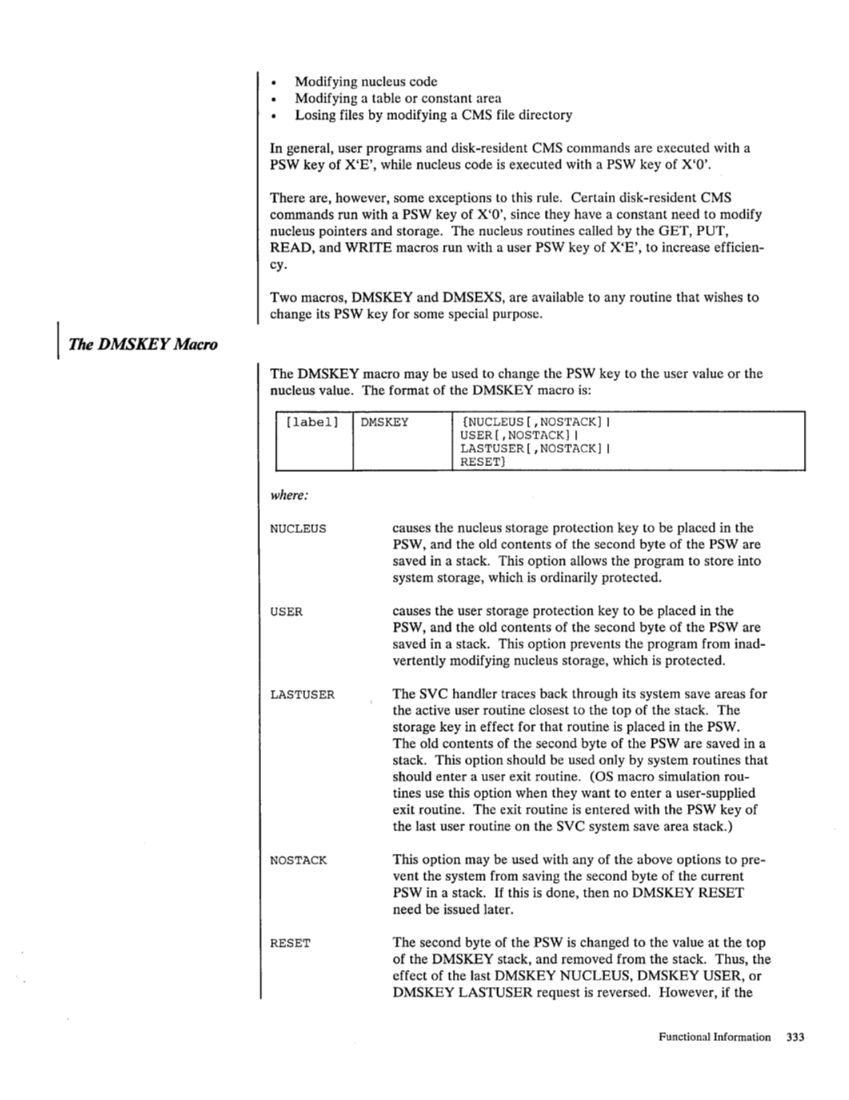Modifying nucleus code
Modifying a table or constant area
Losing files by modifying a
In general, user programs and disk-resident
There are, however, some exceptions to this rule. Certain disk-resident
nucleus pointers and storage. The nucleus routines called by the GET,
cy.
Two macros,
change its
The
nucleus value. The format of the
[label]
where:
DMSKEY
causes the nucleus storage protection key to be placed in the
saved in a stack. This option allows the program to store into
system storage, which is ordinarily protected.
causes the user storage protection key to be placed in the
saved in a stack. This option prevents the program from inad
vertently modifying nucleus storage, which is protected.
The
the active user routine closest to the top of the stack. The
storage key in effect for that routine is placed in the
stack. This option should be used only by system routines that
should enter a user exit routine.
tines use this option when they want to enter a user-supplied
exit routine. The exit routine is entered with the
the last user routine on the
This option may be used with any of the above options to pre
vent the system from saving the second byte of the current
The second byte of the
of the
effect of the last
Functional Information 333



































































































































































































































































































































































































































































































































































































































